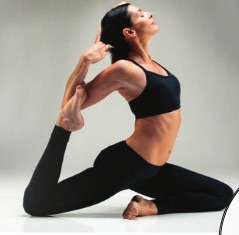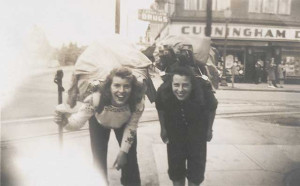 Before she was a yogi-master at Equinox’s Pure Yoga, Karen Nourizadeh was a litigating attorney for Fortune 500 companies – she knows a lot about stress. Here, her top tips to stay balanced.
Before she was a yogi-master at Equinox’s Pure Yoga, Karen Nourizadeh was a litigating attorney for Fortune 500 companies – she knows a lot about stress. Here, her top tips to stay balanced.
- To counter the downward pointing of the toes from wearing heels, stretch your foot and point your toes toward your face while flexing your foot. Add a twist of your chest toward your flexed food for a deeper stretch to your leg.
- Bring feet together, lift your heels up off the ground, bend your knees, and sit on your heels. Your knees move to the ground and your toes are curled under, not lying flat, while you sit atop your heels. Stay between one and three minutes, and breathe.
- Twists counter back, neck and shoulder fatigue. While seated, take your left hand and your right knee and move your right hand to the back of the chair. Push down with your hands, lift your check and head up as you inhale, then twist to the right as you exhale. Repeat on the left, after five breaths.





